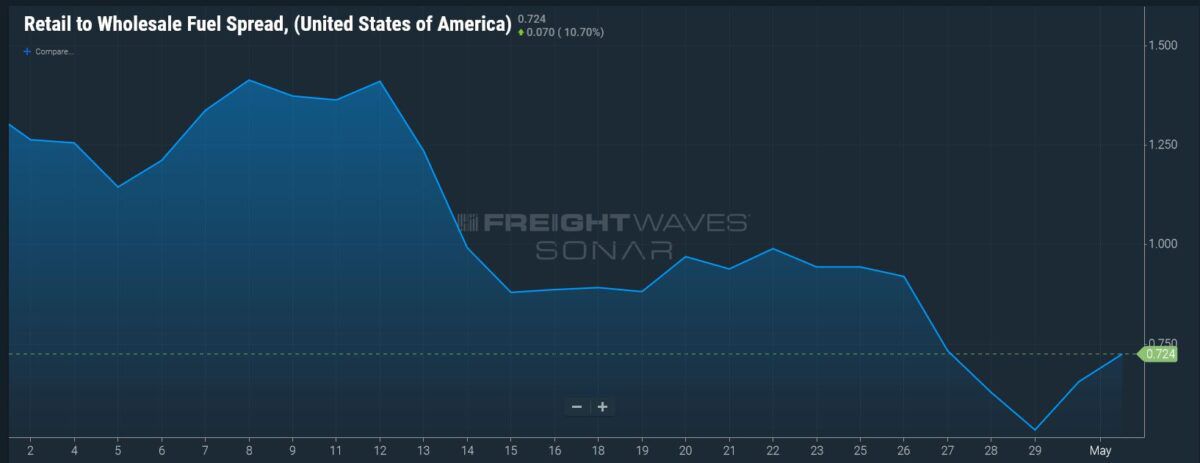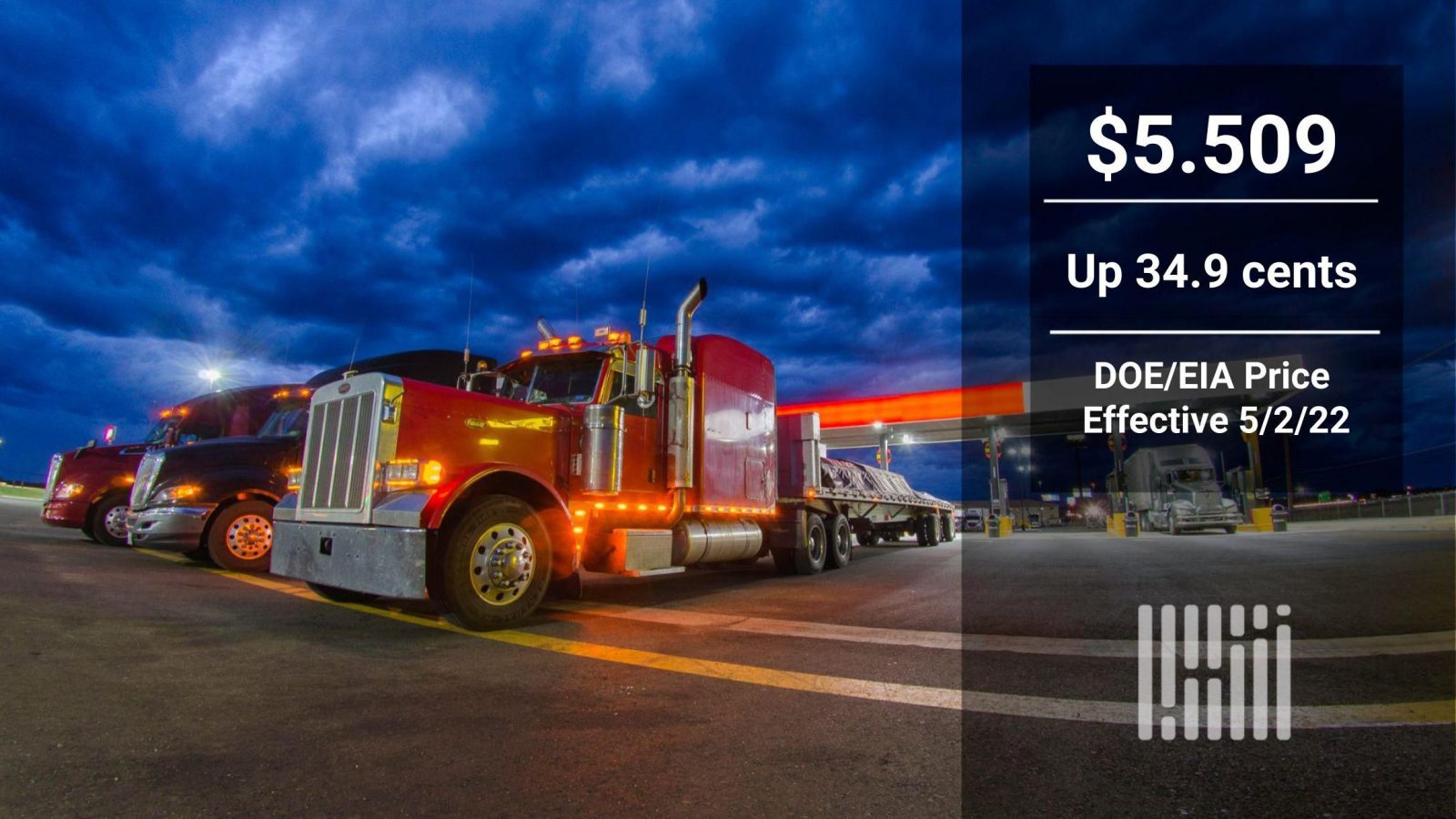On the day the Department of /Energy Information Administration benchmark diesel price hit its all-time high, the futures market plowed ahead with a significant increase, signaling that the upward moves may not be done.
An increase of 34.9 cents a gallon brought the /EIA average weekly retail price up to $5.509 a gallon, effective Monday. That is more than 25 cents higher than the previous record of $5.25 a gallon, set March 25.
It may be small comfort but the current /EIA price is nowhere near the highest inflation-adjusted price. When crude hit its all-time high above $145 a barrel in early July 2008, the /EIA price peaked at $4.764 a gallon on July 14. Adjusted for inflation, that is roughly $6.30 a gallon. Assuming truck mileage today is far superior to mileage then, and the reality, as painful as it is, is that the trucking industry has faced a more formidable set of prices than what it is dealing with now.
But that doesn’t take away from the other negative news in the diesel market Monday.
The result was that the May contract rose from a settlement just under $3.94 a gallon on April 22 to a settlement above $5.13 a gallon on Thursday. It then fell more than 35 cents on Friday as the squeeze eased, which is the way most squeezes conclude.
The June contract, which became the front month contract Monday, was rising at the same time, but at nowhere near the rate that the May contract was soaring. That led to the question: How much of the increase in June barrels was in sympathy to what was going on in May, and how much was tightness in June?
The answer is in: June was climbing all by itself and didn’t need any help. June barrels of ULSD, which are now the front month contract, climbed 18.77 cents a gallon Monday to settle at $4.2049 a gallon, an increase of 4.67%. If last week’s May settlements are thrown out as a function of an end-of-contract squeeze, the June settlement Monday was the second-highest in the history of the contract.
Significantly, the percentage increase was far more than for other contracts. West Texas Intermediate crude was up 0.46%; Brent crude, the global benchmark, rose 0.41%; and RBOB gasoline, an unfinished gasoline blendstock, climbed 1.09%.
The increase in the /EIA price of roughly 35 cents a gallon suggests retail prices were doing a dance as they were buffeted by several factors. Retail prices, per the FUELS.USA data series in SONAR, already were less than the normal range of a $1- to $1.05-a-gallon premium over wholesale prices (though the spread has been so volatile that normal is a relative term these days). Wholesale prices nationally rose approximately 52 cents between Monday and Saturday, suggesting that the oil companies setting those prices were caught between the soaring May contract that would normally be the primary number for determining wholesale levels, and the more restrained prices in June.

Diesel’s strength has been exacerbated by the fact that the delivery point for the CME ULSD contract is New York Harbor, and inventories of ULSD on the East Coast, known as PADD 1, are far below normal levels.
Last week’s weekly EIA inventory report had stocks in PADD 1 at 22.5 million barrels. A year ago in the third week of April, they were 39.3 million barrels. In 2019, the last pre-pandemic year, they were 30.7 million barrels in the third week of April. Inventories have not been this low since early 2015, when consumption was less than it is today.






